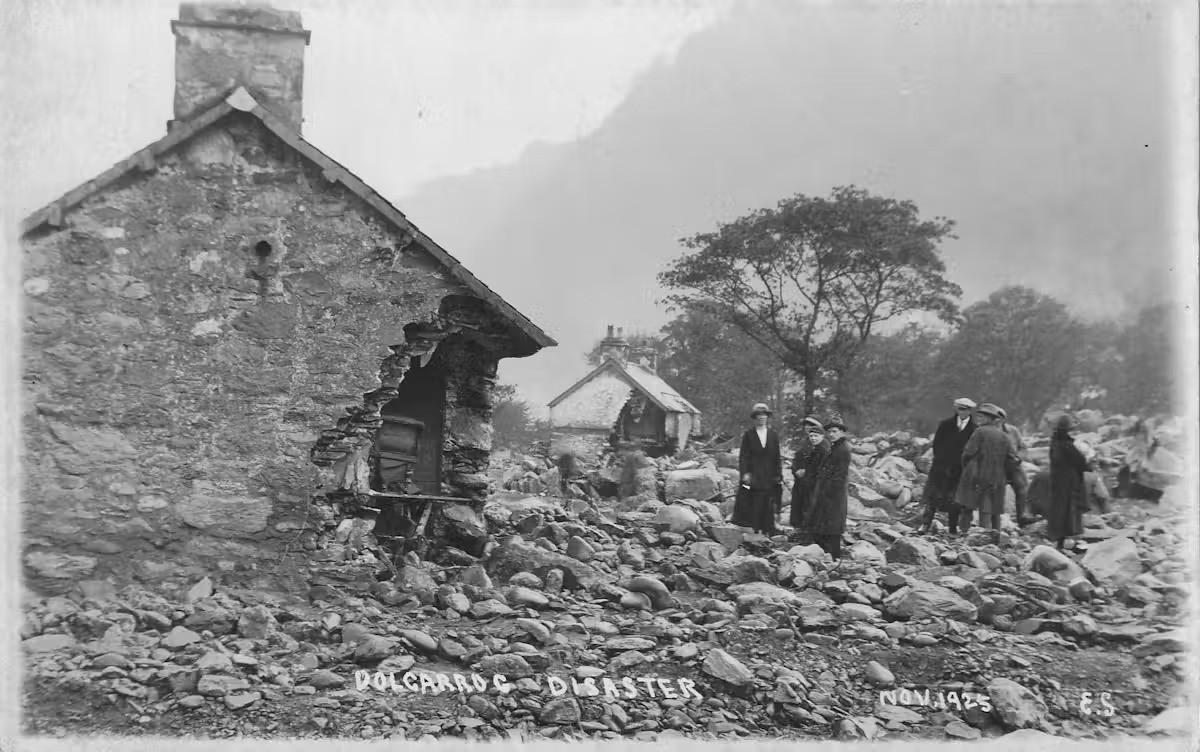One hundred years ago, a catastrophic flood carrying enormous boulders swept through part of Dolgarrog village, north Wales, destroying several homes, a bridge and the local chapel. Ten adults and six children lost their lives. The tragedy was widely and King George V sent a message of condolence.
This was not a natural . It was caused by the failure of two dams impounding the Eigiau and Coedty reservoirs on the Carneddau plateau, high above Dolgarrog, following a wet October. Overtopped by inflow from the Eigiau breach, the Coedty dam failed catastrophically, unleashing a flood of some 1.7 million cubic metres. There was no time to warn the village.
The Dolgarrog disaster followed a reservoir failure at , Scotland, in April 1925. Both brought attention to poor dam construction and inadequate maintenance practices, and led directly to the Reservoirs (Safety Provisions) Act of 1930.
The act sought to ensure the structural safety of large reservoirs by introducing legal requirements for regular inspection and certification by qualified engineers. It was the first attempt in the UK to regulate the design, construction, and maintenance of reservoirs through statutory safety measures.
Since Dolgarrog, the UK has had an excellent reservoir safety record. But in late July 2019, the evacuation of more than downstream of Toddbrook reservoir in Derbyshire, England, was ordered. Toddbrook had received a month’s rain in just two days.
Swollen inflows overtopped the dam’s emergency spillway, undermining its concrete slabs. A large cavity appeared on the spillway, exposing the dam’s core, raising fears of a breach.
A dropped 400 tonnes of aggregate on the Toddbrook spillway to reinforce the damaged section, while fire services used high-capacity pumps to lower the water level and reduce pressure on the dam. After several days, engineers declared the Toddbrook dam stable enough to lift the evacuation order.
The Toddbrook incident was one of the most serious near failures of a dam in recent UK history. It showed how extreme rainfall events can living downstream. , the fire incident commander, said: “We were in a situation where we had five times as much water going in than we could take out. We absolutely thought it could fail. It was a very, very tense night.”
Following this scare, in April 2021, the UK government commissioned an into reservoir safety. A was issued to owners of all large, raised reservoirs, making the formulation of emergency a legal requirement to ensure that they are prepared for an eventuality that could result in an uncontrolled release of water.
The threat from climate change
As who work on river processes and landforms, we are researching the landscape-changing effects of such dam breach floods, but also how topography can amplify the hazard to communities.
As the Dolgarrog disaster showed so graphically, reservoirs that drain into steep and narrow upland valleys present a particular hazard, especially where flows increase in speed and pick up destructive boulders. All aspects of the landscape setting should be part of flood emergency planning.
While the Toddbrook reservoir was compliant with existing legislation and had been recently inspected, it suffered “.” by local residents about how well it had been maintained. .
Most reservoirs in upland Britain were constructed in the 19th century under hydrological conditions that no longer hold. Embankment dams and older masonry dams can be especially vulnerable to erosion, seepage, slope instability or overtopping.
The most is overtopping where the spillway cannot cope with floodwaters. Reservoir safety may also be challenged by rapid or sustained water level lowering during droughts. As pore pressures change, and soils dry out and crack, embankment stability can be compromised.
Climate change is increasing in many parts of the UK posing a threat to reservoir safety. Climate models tell us that intense rainstorms that cause flash flooding will be five times more likely by 2080. Steep upland catchments in hard impermeable rocks are especially vulnerable to flash flooding, and this is where much of the UK’s water storage infrastructure is located.
The Dolgarrog disaster was the last time anyone was killed in the UK by a dam failure. But if intense storms and prolonged droughts are the new normal for our climate, the risk to ageing upland water storage infrastructure will likely increase.
, Professor of Physical Geography, ; , Professor in the Department of Geography, , and , Professor of Physical Geography,
This article is republished from under a Creative Commons license. Read the .
